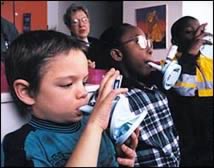DFW Still Dirty Air Capital of Texas
 Here's the orignal version of Sunday's Star-Telegram op-ed piece responding to former Arlington Mayor and EPA Regional Administrator Richard Greene's assertion that DFW air quality "is getting better." You can see the published online version here. It's a pretty good sumary of the current 2014 situation…
Here's the orignal version of Sunday's Star-Telegram op-ed piece responding to former Arlington Mayor and EPA Regional Administrator Richard Greene's assertion that DFW air quality "is getting better." You can see the published online version here. It's a pretty good sumary of the current 2014 situation…
I don’t know who or what prompted my friend Mayor Greene to write what he did about DFW air quality last week, but the language he used sure looked like the same “don’t worry, be happy” arguments that officials at the Texas Commission on Environmental Quality promote these days.
Unfortunately for the Mayor, his column ran just after the worst week of DFW ozone readings in 2014 re-established the fact that North Texas has replaced Houston as the metropolitan area with the most abysmal air quality in Texas. A single five-day reminder of what real summer looks like was enough to produce four readings above the 1997 smog standard that DFW should have conquered years ago. In contrast, Houston hasn’t had a single reading of that severity so far this year. DFW also once again leads Houston in the total number of readings above the current smog standard.
Whenever state officials want to remind DFW residents how much air quality has improved, they, like Mayor Greene, start from a decade or two ago. That’s because if they started from 2008, or roughly the time Rick Perry decided to run for president, they couldn’t draw the same conclusion.
Since then air quality in DFW has stagnated. In fact, the 2011 TCEQ plan rhetorically aimed at clearing that old 1997 smog standard actually made ozone worse. It didn’t include any attempts to control major industrial sources of air pollution like the Midlothian cement plants, the East Texas coal plants, or the thousands of oil and gas sources that began operation in the Barnett Shale over the last eight years. It was the single worst failure of air quality planning in Texas history – so far.
But it may have a sequel because the Perry administration is once again drafting a lazy anti-smog plan that will not require any of those major sources to reduce pollution, instead relying on a new EPA-mandated gasoline formula to get the region “close enough” to the current standard (ironic isn’t it?). According to its own predictions however, “close enough” means the state is satisfied to leave at least four DFW monitors representing millions of residents in Tarrant County and Denton out of compliance.
It’s actually much worse than that. The smog standard the state claims it will be “close enough” to is one we already know is not protective of public health. A survey of peer-reviewed, journal-published studies over the last decade indicate widespread health effects, including heart attacks, strokes, and respiratory disease are occurring at levels of smog currently defined as “safe.” That’s why an independent panel of scientists recently recommended the EPA lower the national smog standard. The Agency must decide to accept or reject that recommendation by December, about the same time the state will be holding public hearings on its newest do-nothing plan.
So while TCEQ is submitting a plan that won’t even achieve the current smog standard in DFW, the evidence points to a need to do much, much better.
This summer’s kind weather may yet see annual smog averages drop. But if you believe this will be the norm in coming years, then you might also believe we’re on the verge of lasting peace in the Middle East or Justin Bieber is finally reaching maturity.
In its historic 2009 study, Cook Children’s Hospital found rates of childhood asthma in North Texas “far exceeded” state and national averages. Texas Department of State Health Services data show DFW has one of the highest hospitalization rates for childhood asthma in the state, with DFW accounting for a third of the $172 million spent admitting kids for treatment in 2011 alone.
We need a more serious approach to clean air than “close enough” to an already obsolete smog standard.
Jim Schermbeck is Director of Downwinders at Risk, a 20-year old DFW-based clean air group.
